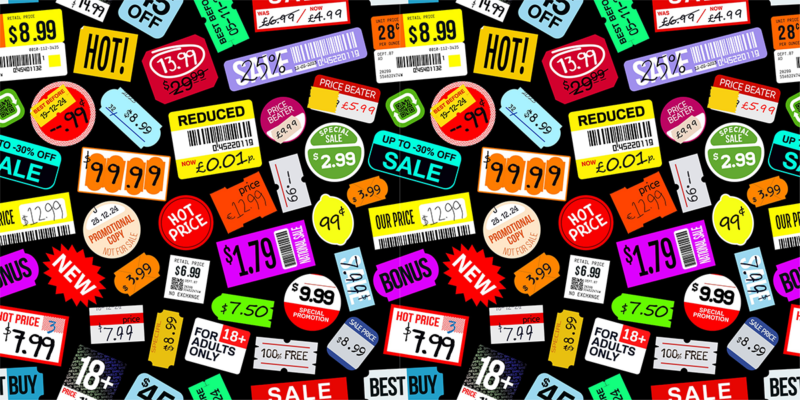Together or Not at All, Part 2
 In a previous column, “Signal to Noise,” I discussed the ever-increasing amount of marketing communications besieging our end-users/customers.
In a previous column, “Signal to Noise,” I discussed the ever-increasing amount of marketing communications besieging our end-users/customers.
And while that trend in and of itself has a multifaceted impact on the industry, there is an underlying issue that has a much, much, much larger potential impact and is truly the dark side of the issue — direct sales.
Trust Matters
Realistically, we all engage in the click-to-buy button scenario at some point, and for a lot of industries and businesses, it’s the best way for them to operate. It’s fast, cost-effective and eliminates multiple layers of complexity, especially for very small businesses and low-cost products that cannot support the higher overhead that comes with actual people.
But, and this is a HUGE but, when the products in question require support, configuration, installation and design into a system, the need for face-to-face, people-to-people selling and service is not really an option — it’s a necessity. Or at least it should be.
A few months ago, Chuck Surack, president and owner of Sweetwater Sound (and its subsidiaries including All Pro Sound and Mynett Music) had this to say regarding the issue: “It’s no secret that sustained success in our industry is built on relationships and loyalty. Those two powerful words reflect strong fundamental values. If having an “add-to-cart” button on your site garners you a few sales but ultimately strays from those values and damages or destroys relationships and loyalty among your retailers, is it really worth it? Trust matters.”
If you don’t know who Sweetwater Music is, you should. They are the largest online retailer of musical instruments and pro audio equipment in the United States. Located in Fort Wayne, Ind., Sweetwater has over 1,500 employees and 2018 revenues slightly over 700 million U.S. dollars. To ANY manufacturer or supplier in the MI or proAV world they represent a major sales channel, and what Surack says really should matter.
But, let’s not fool ourselves — the concepts embodied in today’s digital push-to-buy world are not new. If you’re over 40, you probably remember the early days of this trend when it was called mail-order or catalog sales. In reality, it’s been around in one form or another since American retail icon Sears (then known as Sears Roebuck& Co.) launched its first printed flyer in 1893.
The difference today is the presence of gigantic global on-line marketplaces like the ubiquitous Amazon, eBay and elsewhere, Ali-Baba channels. The enormous size and financial power represented by these multi-billion-dollar enterprises lead any manufacturer or supplier of almost anything to consider the possibility of reaching the consumer directly with ‘fulfillment by xyz’ as their partner.
Millions of Clicks
The lure of hundreds of millions of eyeballs is, without a doubt, a massive temptation. But a word of caution to all who see glowing visions of piles of higher margin revenue a-waiting — the repercussions of tearing apart your existing channel relationships can be far more destructive than you imagined.
Mr. Surack expanded on this in his highly analytical article (Music Trades magazine, December 2018 issue, guest editorial starting on page 24) said that, “I can see where some manufacturers might believe there are benefits to selling direct. But when we take a closer look, those seeming benefits aren’t as large as they appear and in fact ultimately will cost the manufacturer.” (Bold text added by author.)
He added, “One definite cost will be the loss of support from retailers. One would have to assume that even if they don’t drop the lines that sell direct, retailers will shift their focus to selling brands that don’t sell direct. Manufacturers have said they expect growth of 1 percent to 2 percent using direct sales. But the loss of even a few good retailers in response will eliminate that growth and more, resulting in a net loss.” (Bold text added by author.)
I would add that everything he stated regarding retails is also true of consultants, specifiers and the integration channel. In today’s multi-level product marketplaces, it’s not just retailers that would be lost, although that’s certainly a major issue; the loss of support from all the other “partners” such as consultants, specifiers and others in the integration channel would only further erode potential sales and revenue.
Instant Karma
And then, let’s not forget the significance of the negative karma and ill will created by stepping on your existing distribution.
Given all the potential downside impacts it would seem that any manufacturer or supplier considering this path would be well advised to exercise great caution in making the change.
Our own AV world is replete with historical examples of companies who in essence committed channel suicide by making such a move, and in some cases, they didn’t survive. In others, it has taken a very long time to build back the trust they so quickly destroyed with one unfortunate decision.
So where does that leave us? Confused and divided, it would seem. In some cases, it’s very hard to fault a small company whose low-cost product doesn’t get much attention from a channel from going the ‘direct’ route — and frankly, we shouldn’t fault them for finding a way to sell their product, especially if our conventional paths were closed or not available to them.
The rub comes when a company that is successful in the existing business model suddenly decides to jump ship and head off on an alternate pathway. It would seem, based on history, that this occurs most often when either new or different management steps in, especially people from other industries, where the direct sales model is more the norm. They saw it working where they came from so they bring it with them to their new gig. The problem is they don’t understand and haven’t taken the time to learn the structure of our world — they just inflict the known working model on a business where it simply doesn’t need to exist.
Not doing your homework, and not understanding the customers and relationships that are in place in any business segment is a highly perilous pathway to follow, one that can and has led to disaster. If you find yourself faced with a partner contemplating this path, consider whether or not you want to maintain your relationship or seek a new one that respects your role in the sales process.





